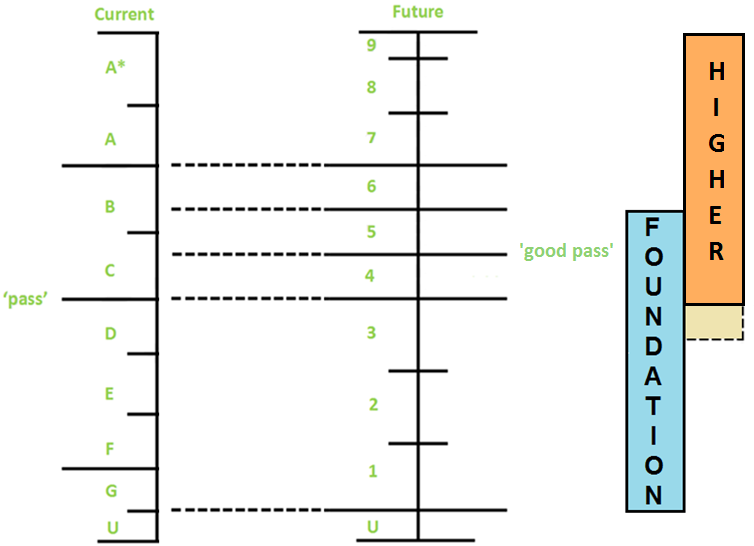Foundation or higher tier? Things to consider for GCSE (9-1) Mathematics
16 February 2017
Many centres around the country are currently making decisions of ‘foundation tier or higher tier’ for their GCSE (9-1) Mathematics students, so what are the important differences? One of the important differences between the two tiers is the grade ranges that they now cover.
- The new foundation covers grades 1 to 5, which means that there’s a higher level grade achievable than with the previous foundation tier (where grade C was the maximum).
- On the new higher tier, questions will be set from grade 4 to grade 9, which means that we no longer have the grade D questions that would have been asked on the previous higher tier (although a grade 3 can be awarded to students that just miss out on the grade 4 boundary by a small number of marks).
- The overlap between the two tiers is now at grades 4 and 5, which is a higher level than for the previous qualification (which was grades C and D).

The content weightings between the two tiers have also changed and are certainly worth bearing in mind in tiering decisions. Foundation tier papers will see a greater focus on the number topic compared to the higher, while the higher tier will see a greater focus on algebra. Smaller differences exist between the tiers for the ratio, proportion and rates of change, geometry and measures topic weightings, whilst probability and statistics are equal across the two.
|
Foundation |
Higher |
| Number |
25% |
15% |
| Algebra |
20% |
30% |
| Ratio, proportion and rates of change |
25% |
20% |
| Geometry and measures |
15% |
20% |
| Probability / statistics |
15% |
15% |
The new GCSE (9-1) Mathematics assessment objective weightings also differ across the two tiers. Foundation tier students will see 50% of marks targeted at AO1 (use and apply standard techniques), with 25% of marks targeting AO2 (reason, interpret and communicate mathematically) and 25% targeting AO3 (solve problems within mathematics and in other contexts). Higher tier students will see fewer (40%) of their marks targeted at AO1, with 30% targeting AO2 and 30% targeting AO3.
There will still be common questions between the two tiers, which will be at the overlap grades (4 and 5). There is a requirement for a minimum of 20% of each paper to be common questions and on OCR’s 100-mark GCSE (9-1) Maths questions papers, we frequently include slightly more. These overlap questions help in awarding, enabling us to ensure comparability between the two tiers.
To assist in tiering decisions, we have produced multiple sets of practice papers, available to download from ocr.org.uk/gcsemaths. Practice papers sets two and three are only available to download securely, by using your OCR Interchange login. We have also published practice paper analysis grids, which allow you to get an estimate of both class and individual student performance on the papers in
- each content area,
- each assessment objective,
- the common questions between the two tiers.
You may also like to read our previous GCSE (9-1) Mathematics tiering and content shifts blog entry.
If you have any queries or questions on our maths questions, you can comment below, email us via maths@ocr.org.uk, call us on 01223 553998 or tweet us @OCR_Maths.
About the author
Neil Ogden - Subject Specialist - Mathematics
 Neil has worked in a variety of qualification lead roles at OCR for a number of years, having joined the maths team in 2012 and then becoming a subject specialist in 2014. Neil led the development of the new GCSE (9-1) maths qualification (J560) and following its accreditation, the majority of his time is currently spent supporting teachers through the introduction of the new qualification.
Neil has worked in a variety of qualification lead roles at OCR for a number of years, having joined the maths team in 2012 and then becoming a subject specialist in 2014. Neil led the development of the new GCSE (9-1) maths qualification (J560) and following its accreditation, the majority of his time is currently spent supporting teachers through the introduction of the new qualification.
Neil is also responsible for the current GCSE Maths A and B courses (J562 and J567), as well as OCR maths Twitter and changes to the maths qualification pages on the OCR website.